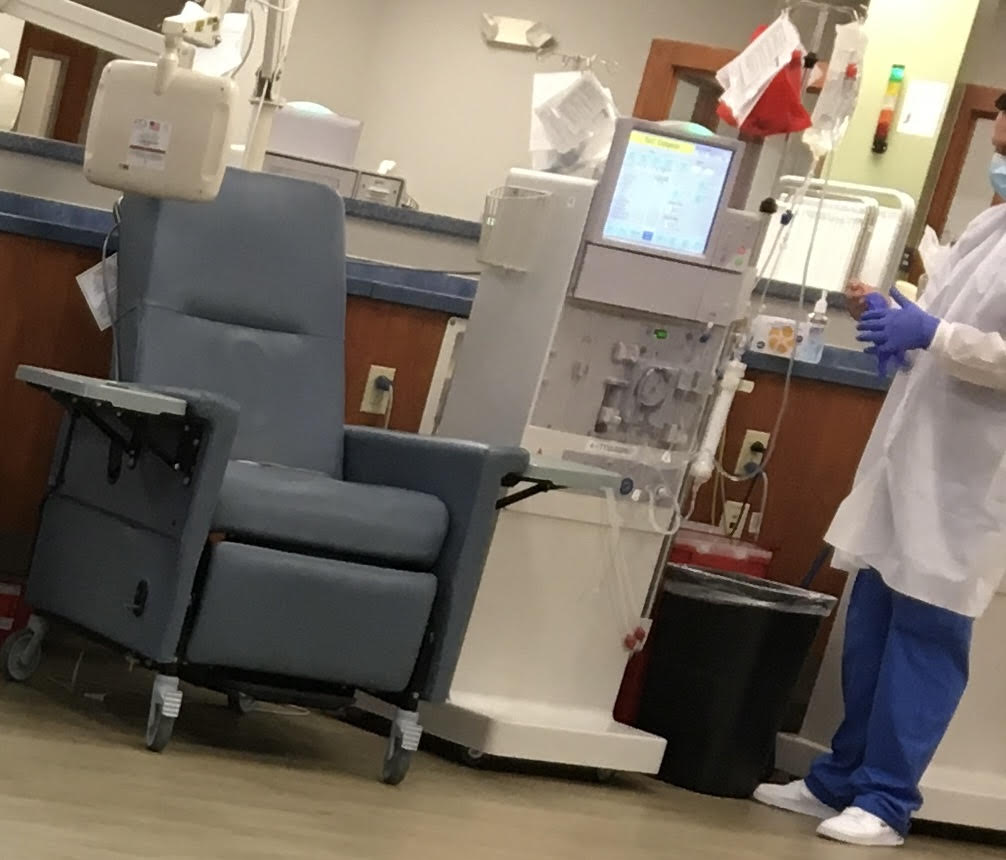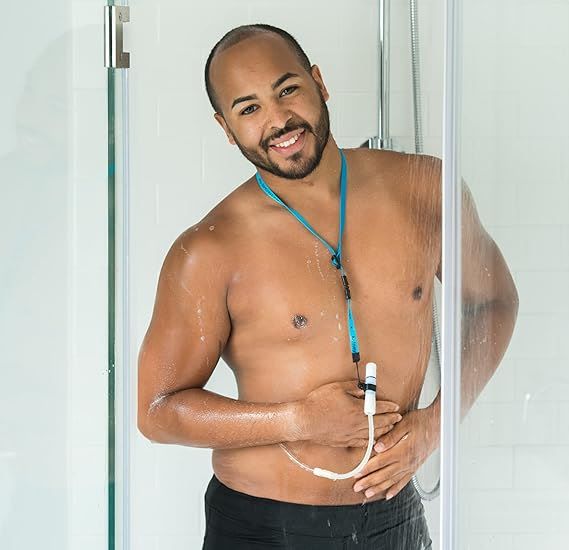In July, amidst all the cuts happening at the company I worked for, my department was next on the hit list. So, by the end of August, I lost my job. When I lost my job, I lost my structure, my routine, and some of my faith. I felt helpless, hopeless and a little depressed. It felt like my world had fallen apart.
I started doing things I shouldn’t been doing, I stopped doing things I should have been doing. Those herbal teas I had been drinking, stopped that. The healthy cooking, huh, what cooking. I was eating what I wanted without consideration of what it was doing to my kidneys. I even stopped praying. At the time I didn’t understand why I was acting this way. Later I realized I was depressed.
By my next appointment in January, my nephrologist declared that I had to go on dialysis immediately. I was in full-blown kidney failure. ESRD – End Stage Renal Disease is what it is called. My heart was broken. Peeking out of my depressive fog, I realized I had stopped doing the things I had promised myself I would do to keep from developing ESRD. Needless to say, I started praying again and trying to renew my faith.
So, in the first week of January 2017, I started my first dialysis treatment. Because my ESRD had progressed so fast so quickly, I had to get an emergency central venous catheter placed in my neck so I could start dialysis as soon as possible.
There are three main types of dialysis.

In-Center hemodialysis is the most common type of dialysis. It involves pumping blood out of the body through a filter and into an artificial kidney machine called a dialyzer. This cleans the blood of waste such as creatinine, urea, salt, and extra fluid. After the blood is cleaned, it is then returned to your body. Hemodialysis is usually done in a dialysis center 3–5 times a week.

Home hemodialysis is much like in-center hemodialysis in that it requires that two needles be inserted into the patient’s vascular access to allow the blood to flow from the body to the machine and back into the body. The only thing different is that you and your care partner need to be trained to insert your needles safely and to handle any problems that may come up. Home hemodialysis is usually done three times a week three to four hours a day or longer depending on your prescription. Training may take from several weeks to a few months.

Home peritoneal dialysis (also called PD) is much different than the other two in that you fill your abdomen with dialysate, let it remain there for the dwell time, then drain the fluid. Gravity moves the fluid through the catheter and into and out of your abdomen. Some patients train to do manual exchanges first which can make training on the machine easier and a lot less intimidating. Nocturnal peritoneal dialysis is done using a machine called a cycler. This way the job is being done while you sleep.
I chose the in-center dialysis because number one I wasn’t ready to get a transplant because, to be honest, I was scared shitless. I have never had to go under the knife for something that serious. This was something I would have to have a long think on. Number two, since I’m at home a lot more because of my job loss, I also wanted a little more social interaction. Walking into that open room full of patients doing the same thing I was there for was a bit terrifying for me. You know when you walk into a room full of people and it feels like everyone is judgingly staring at you? Well, I felt like all eyes were on me (it could have been my imagination, but it felt real just the same).
I was set up to be on the dialysis machine 3 times a week 3 hours a day. When I get anxious my stomach starts to hurt. I feel the heat rising from inside my body that makes small beads of sweat break out on my forehead. That’s how I felt as I waited for them to hook me up to the machine.
At first, the machine was a little threatening but as I sat there I found the light humming a little calming. The technicians were gentle and reassuring. The other patients sitting around me were very friendly. I’m a quiet person by nature but soon we were all talking and laughing up a storm.
I discovered that the light-hearted banter and camaraderie was good for my soul. I started to break out of my mental fog and felt a heaviness lifted off my heart. I was even looking forward to my next treatment just so I could meet up again with my newfound friends. Getting out of the house and being around people again was exactly what I needed to get my spirits up.
I’m not saying that social interaction is the only thing I did that helped me with my depression. I learned a few techniques that helped me deal with my depression and anxiety. I use some of these methods today to help me when I get a little overwhelmed and anxious.
 Connect with people (As I did at the dialysis center)
Connect with people (As I did at the dialysis center) Keeping a journal (Wish I had, it would have made creating this blog much easier)
Keeping a journal (Wish I had, it would have made creating this blog much easier) Practicing yoga (It really helped take my mind off things for a while)
Practicing yoga (It really helped take my mind off things for a while) Listening to music (This really brought my spirits up, especially when I dance with it!)
Listening to music (This really brought my spirits up, especially when I dance with it!) Meditating (Sometimes I accomplish this, sometimes I don’t, but that doesn’t keep me from trying)
Meditating (Sometimes I accomplish this, sometimes I don’t, but that doesn’t keep me from trying)  Getting a massage (Umm…sounds nice!)
Getting a massage (Umm…sounds nice!) Learning to be assertive (Another thing I’m still working on)
Learning to be assertive (Another thing I’m still working on) Building self-esteem (I have notes strategically placed to “accidentally” run into to read. Gives me a dose of confidence for the day)
Building self-esteem (I have notes strategically placed to “accidentally” run into to read. Gives me a dose of confidence for the day)
One more note on dialysis. Your dialysis treatments are very serious and should not be taken lightly. Missing even one session can be harmful to you and your body. Depending on how long you go without dialysis, you can stay alive anywhere from one week to several weeks.
During the time I was doing in-house hemodialysis, I had a dialysis friend (same name as mine), who decided to give up. She started talking to me about stopping 6 months before that. I was able to talk her out of it a few times but one Tuesday she didn’t show up. I didn’t think much about it because every blue moon she would “take the day off” but then she didn’t come in for her session Thursday either. So when she didn’t show up Saturday I started to get a let concerned. When I asked one of the nurses about her, they told me she she wasn’t coming anymore. I wanted to talk to her again to try to convince her to keep coming and stay strong but I had no way to reach her (the center is not allowed to give out personal information). So when I asked about her Tuesday, they told me that she had died Monday night.
I told this story because like I said, dialysis treatments are a very serious matter. Depression is also serious. I mention that because to me she seemed like she was depressed and that’s why she gave up. If you feel like giving up, please talk to your doctor about it especially if none of my suggestions were able to help. Stay Strong!

PD-Showermate by Stickman dialysis is an easy to use simple shower lanyard to hold up a peritoneal dialysis catheter while showering. So easy to use: just place it over your head, adjust the length so that it safely reaches your catheter, and simply clip it to your PD catheter transfer set, Enjoy your shower. Just click the title link.
PD Showermate- Catheter Showering Support
I’m in the Amazon Associates program and some of the links in this post are affiliate links, which means I may earn a small commission if you click and buy. But I promise I only recommend products I truly believe in and I think add value to your life. Your trust is worth more than any commission”.
- Image by cookie_studio on Freepik (journal)
- Image by Freepik (yoga)
- Image by cookie_studio on Freepik (music and dancing)
- Image by Freepik Meditating)
- Image by cookie_studio on Freepik (massage)
- Image by cookie_studio on Freepik (assertive)
- Image by wayhomestudio on Freepik (self-esteem)
#hemodialysis #peritonealdialysis #dialysis #ESRD


